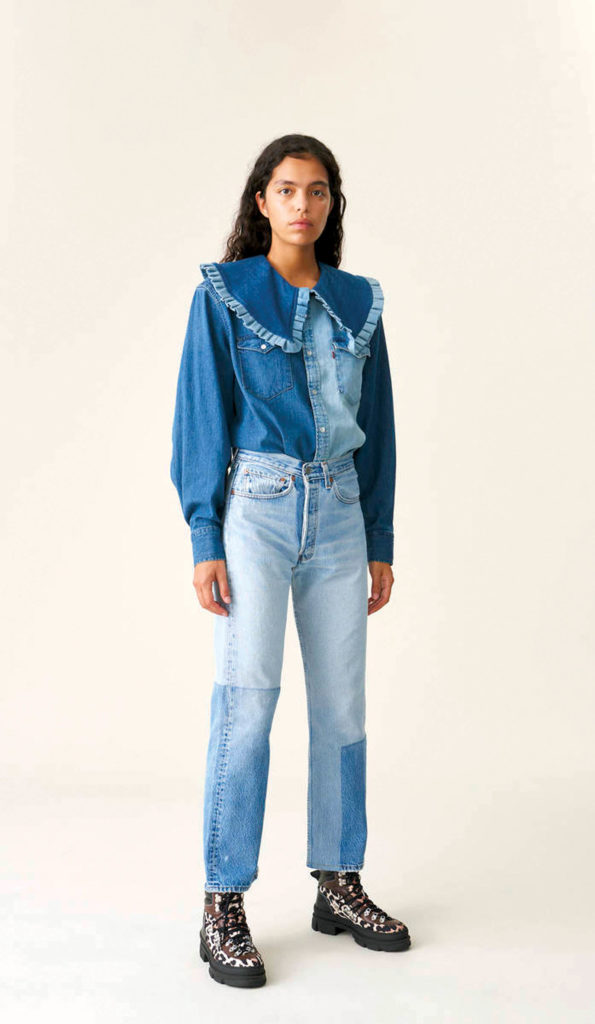
by Marie O’Mahony
In the midst of the reworking of so many segments of the textile industry due to the pandemic, one market segment that has been able to stay focused on the basics of what it does is e-textiles, including conductive fibers and yarns. This technology is no longer just an interesting experiment but has created a viable and growing range of applications.
According to a recent market analysis report from Grand View Research, an India and U.S.-based business consulting firm, “The global e-textiles market is expected to possess high growth potential owing to technological proliferation and innovations in wearable technology and intelligent clothing by expert wearable computing designers.”
In its report “E-textiles and Smart Clothing 2020–2030: Technologies, Markets and Players,” UK-based market research firm IDTechEx summarized its extensive reporting on e-textiles by noting, “The big picture for e-textiles is extremely promising.”
Exploration into novel applications is growing. As an industry, the technical textiles sector has not traditionally paid much attention to fashion and the arts, but as advanced technologies such as e-textiles, fibers and yarns proliferate, “wearables” of all sorts are crossing the line from high-tech, specialty end products into the consumer retail arena.

Applying the technology
Fibers that offer sensing with purpose have been given a more determined emphasis with the current pandemic. Like many smart materials and wearable technologies, these textiles have advanced in many exciting ways, but finding an application as equally forward looking can be challenging. Some recent examples from Levi’s®, H&M, Ganni and researchers at the Royal College of Art in London show how innovation can carry through from the fiber to the final product.
Hennes & Mauritz AB, or H&M as it is more commonly known, is a Swedish multinational company known for its fast-fashion clothing. The company has set up the innovation hub H&M Lab, a platform that intends to create local innovation in fashion retail, and it has collaborated with Berlin-based wearable tech company Boltware to create “Wearable Love,” a denim jacket that uses sensing technology to give the wearer the feeling of being touched by a loved one.
Each jacket is given an individual registration code for the corresponding app. The wearer then creates a profile and invites friends and loved ones to connect using the app’s “Love Lists.” Friends and loved ones can go on to create their own individual touch patterns to send to the wearer as
digital expressions of their thoughts and feelings.
The idea is not new. In 1995, Nicola Lefevre and Swee Tiing Chua, then graduate students at London’s Architects Association (AA), developed a Blind Date Bodysuit that allowed a massage to be sent via modem to another person. Their design did not progress to production, and the technology was not available to commercialize it at that time. But now it is. By using a Wearable Love app via Bluetooth®, the sensing technology no longer needs to be tethered to a modem and for the times in which we live, it offers an opportunity for people to connect, most importantly, with touch.
Environmental considerations
The environmental impact of clothing is driving new developments in traceability, as well as innovative design approaches to creating greater consumer engagement with clothing. To this end, Levi’s has collaborated with Denmark’s Ganni fashion brand to create “Love Letters,” a capsule collection of upcycled denim garments that can be rented. What is unique in their approach is the use of smart fabric technology to share the garment’s history and renters.
Near Field Communication technology embedded in patches and linked to a smartphone allows the garment’s history and prior renters to be revealed, so that it’s not simply another denim shirt, pair of jeans or shirt dress made from upcycled vintage Levi’s and repurposed denim. As an example, Ganni x Levi’s upcycled Levi’s 501® jeans can be rented in the United States for $55 for one week or two weeks for $87 while the retail price is given at $375. Signs of wear and how a garment has been worn have long been appreciated by denim aficionados, making this a good product choice
to launch in this way.
Nordic Swan label environmental standards are met in the cleaning process, with each garment cleaned and stored for 72 hours before being rented again. The garment is delivered in RePack reusable packaging so every detail of the product’s environmental impact is considered.
Flexible antenna
With Horizon 2020 funding (the EU funding program for research and innovation), researchers at Queen Mary University of London, University of Manchester and the Royal College of Art have been developing a graphene-based flexible antenna with a bandwidth that ranges from 3 GHz to 9 GHz. The conductive patch uses cotton as its substrate for next-to-skin comfort, as it is intended for body-centric, biomedical and wearable applications.
It is particularly aimed at use in smart garment design for patients with dementia and Alzheimer’s disease. A more flexible antenna is seen as conforming more easily to the body, whether in motion or in a stationary position for extended periods. It is also expected to be incorporated into the garment more easily, an advantage in the production and scaling up of smart garments, generally.
Environmental considerations have a part to play here also. Graphene offers an alternative to metals, which are more difficult to extract at the end of their life. The researchers bring together a multidisciplinary approach that merges electromagnetic engineering with materials science.
A path to solutions
One of the important trends indicated here is the way that innovators in the sector are looking beyond technical innovation to the “how and why” of the final use of the product from the earliest stage of development. That requires asking pertinent questions: What is the potential to positively affect people, particularly those facing challenges or disadvantages, and what are the environmental consequences?
As the wearable technology sector strives to achieve scale and a more digitized production process, these developments can also provide some solutions. A win all around.
Marie O’Mahony is an industry consultant, author and academic. She is the author of several books on advanced and smart textiles published by Thames and Hudson and is a Visiting Professor at the Royal College of Art (RCA), London.
 TEXTILES.ORG
TEXTILES.ORG


